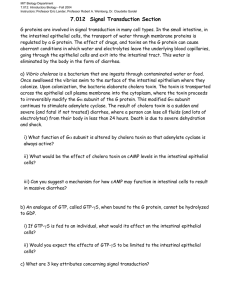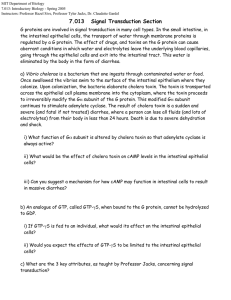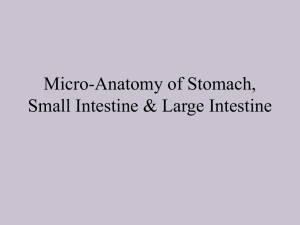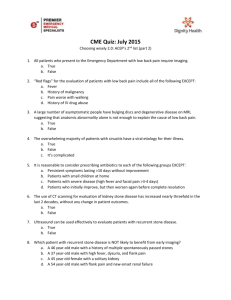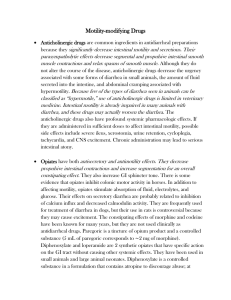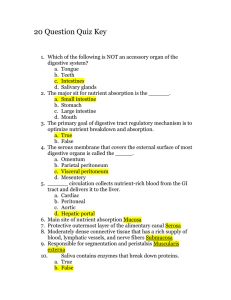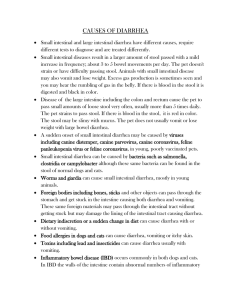Harvard-MIT Division of Health Sciences and Technology HST.121: Gastroenterology, Fall 2005
advertisement
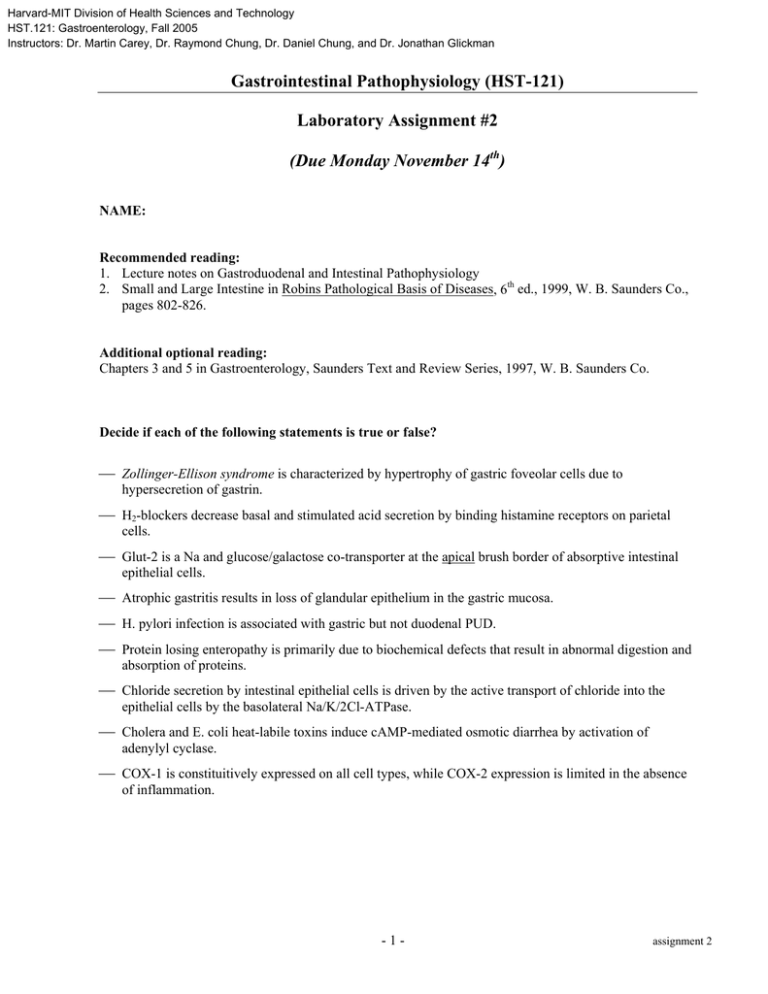
Harvard-MIT Division of Health Sciences and Technology HST.121: Gastroenterology, Fall 2005 Instructors: Dr. Martin Carey, Dr. Raymond Chung, Dr. Daniel Chung, and Dr. Jonathan Glickman Gastrointestinal Pathophysiology (HST-121) Laboratory Assignment #2 (Due Monday November 14th) NAME: Recommended reading: 1. Lecture notes on Gastroduodenal and Intestinal Pathophysiology 2. Small and Large Intestine in Robins Pathological Basis of Diseases, 6th ed., 1999, W. B. Saunders Co., pages 802-826. Additional optional reading: Chapters 3 and 5 in Gastroenterology, Saunders Text and Review Series, 1997, W. B. Saunders Co. Decide if each of the following statements is true or false? ⎯ Zollinger-Ellison syndrome is characterized by hypertrophy of gastric foveolar cells due to hypersecretion of gastrin. ⎯ H2-blockers decrease basal and stimulated acid secretion by binding histamine receptors on parietal cells. ⎯ Glut-2 is a Na and glucose/galactose co-transporter at the apical brush border of absorptive intestinal epithelial cells. ⎯ Atrophic gastritis results in loss of glandular epithelium in the gastric mucosa. ⎯ H. pylori infection is associated with gastric but not duodenal PUD. ⎯ Protein losing enteropathy is primarily due to biochemical defects that result in abnormal digestion and absorption of proteins. ⎯ Chloride secretion by intestinal epithelial cells is driven by the active transport of chloride into the epithelial cells by the basolateral Na/K/2Cl-ATPase. ⎯ Cholera and E. coli heat-labile toxins induce cAMP-mediated osmotic diarrhea by activation of adenylyl cyclase. ⎯ COX-1 is constituitively expressed on all cell types, while COX-2 expression is limited in the absence of inflammation. -1- assignment 2 Gastrointestinal Pathophysiology (HST-121) Case 1: The microscopic slide GI-9 is supposed to show a duodenal biopsy from a 3 year-old female with crampy abdominal pain and 6-8 bowel movements daily. The symptoms have increased in severity in the past 18 months, and have been accompanied by an 8-pound weight loss. 1A) Do you think the lab has mixed-up the biopsies? If so, which part of the intestine does this specimen come from? If not, where are the villi? Case 2: The microscopic slide GI-13 shows a section of large intestine resected from a 78 year-old man who presented with crampy abdominal pain and frankly bloody stool. Based on what is shown on the slide, which of the following statements is most likely true about this patient? ⎯ He has had long-standing Crohn's disease. ⎯ His aortic angiogram shows no perfusion of the superior mesenteric artery. ⎯ He has an abnormal D-Xylose test. Case 3: Microscopic slides GI-7 and GI-8 are both from patients with inflammatory bowel disease. For each of the following statements, choose the slide that best describes the following histological observation. ⎯ ⎯ ⎯ ⎯ Pseudopolyps Fissuring ulcers Mural thickening Inflammation limited to the mucosa and superficial submucosa 3A) Slide GI-7 is from a 26 year-old male with fever, crampy right lower abdominal pain and diarrhea of 2 days' duration. He has had intermittent constipation and diarrhea for 5 years, with 20 pound weight loss. He has also noted knee pain over past 6 months. What is your diagnosis? 3B) Slide GI-8 is from a 41 year-old female with intermittent diarrhea, usually bloody, for 14 years. She has lost 25 pounds over the last year and cannot work. What is your diagnosis? -2- assignment 2
